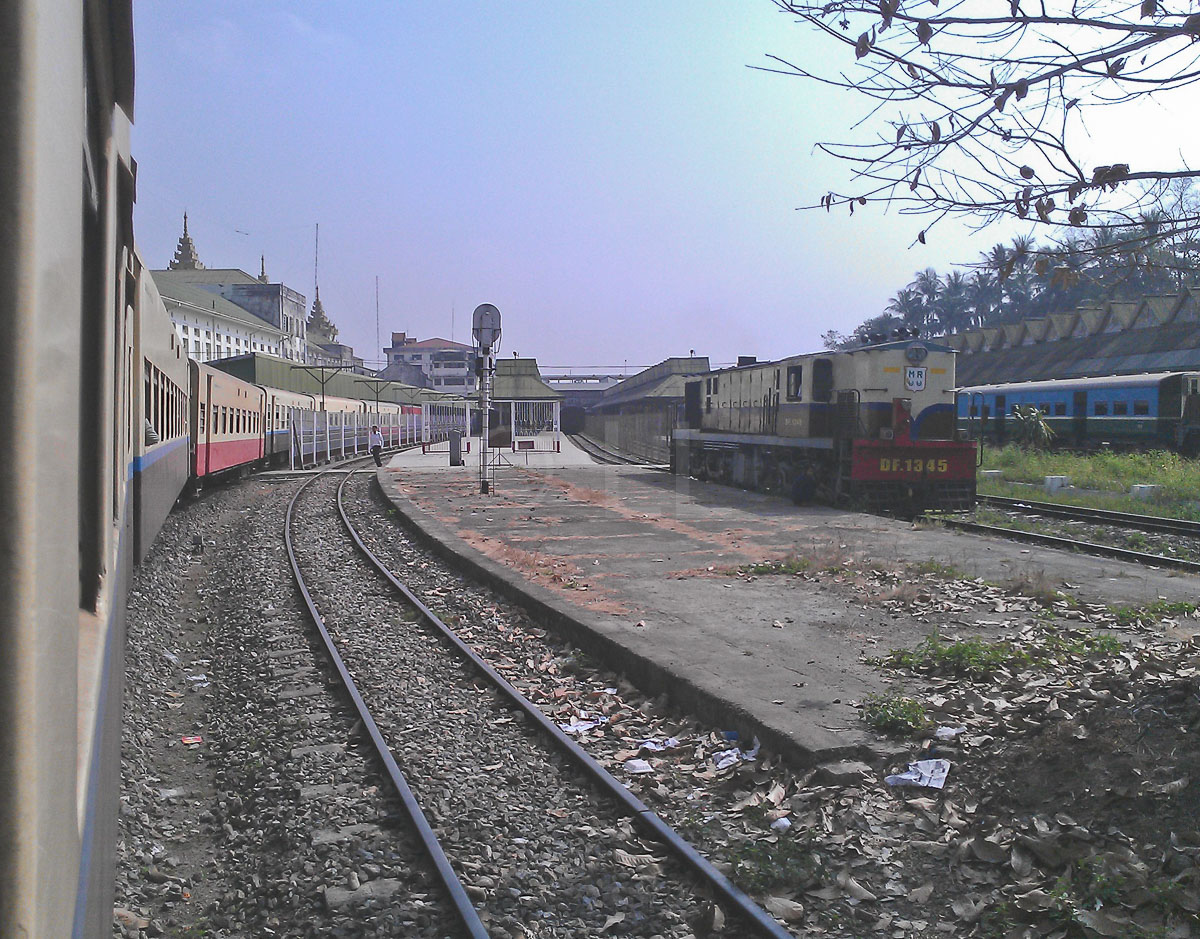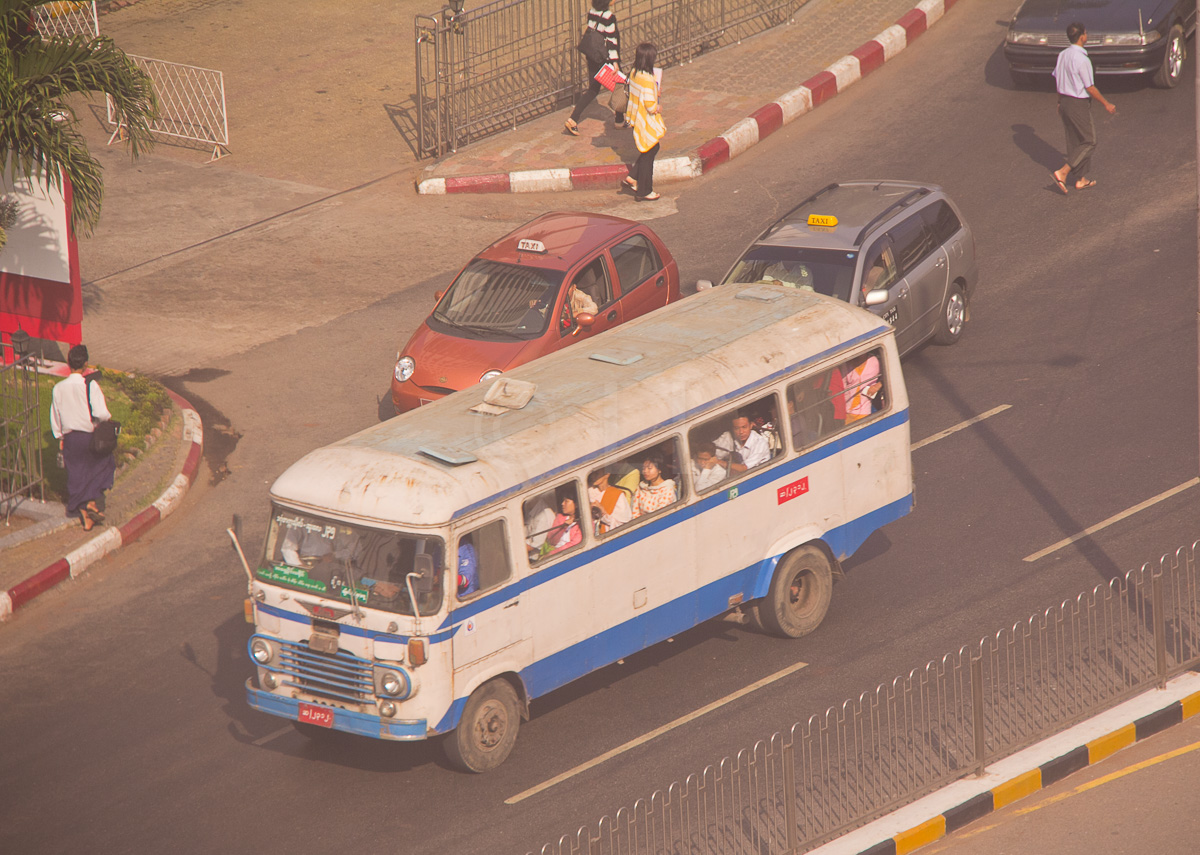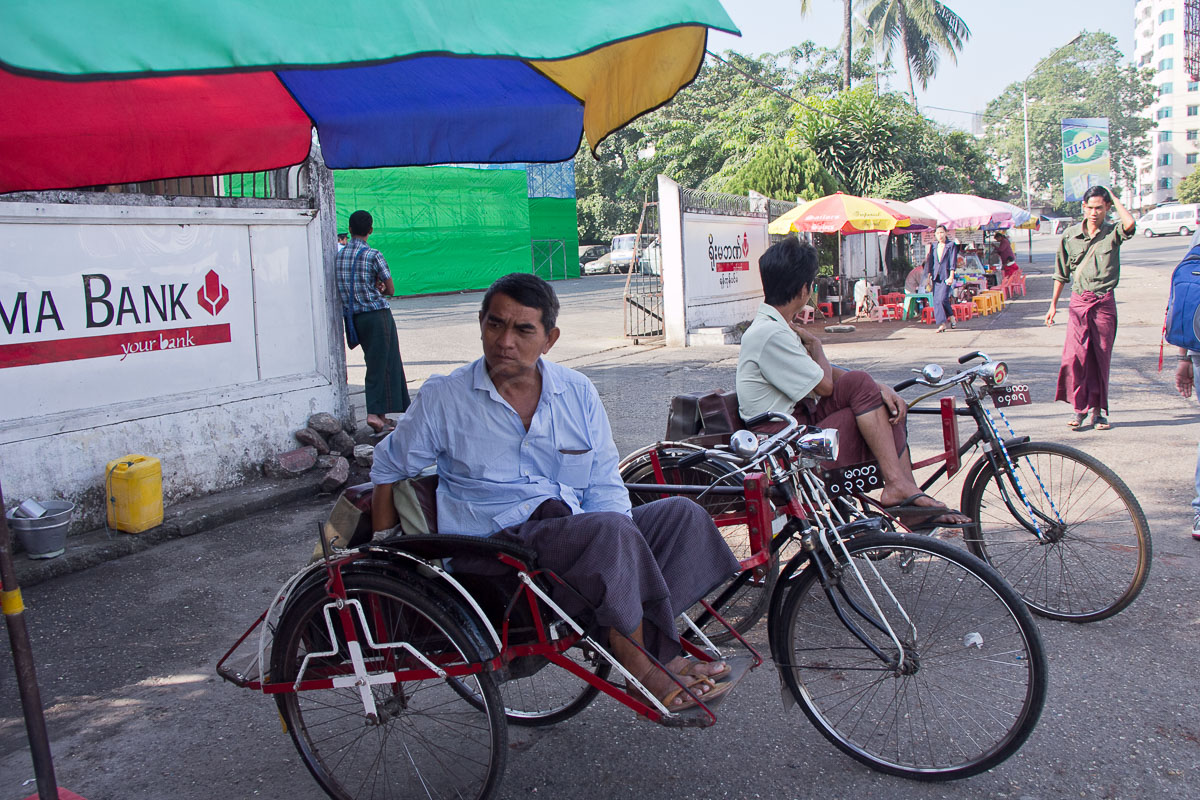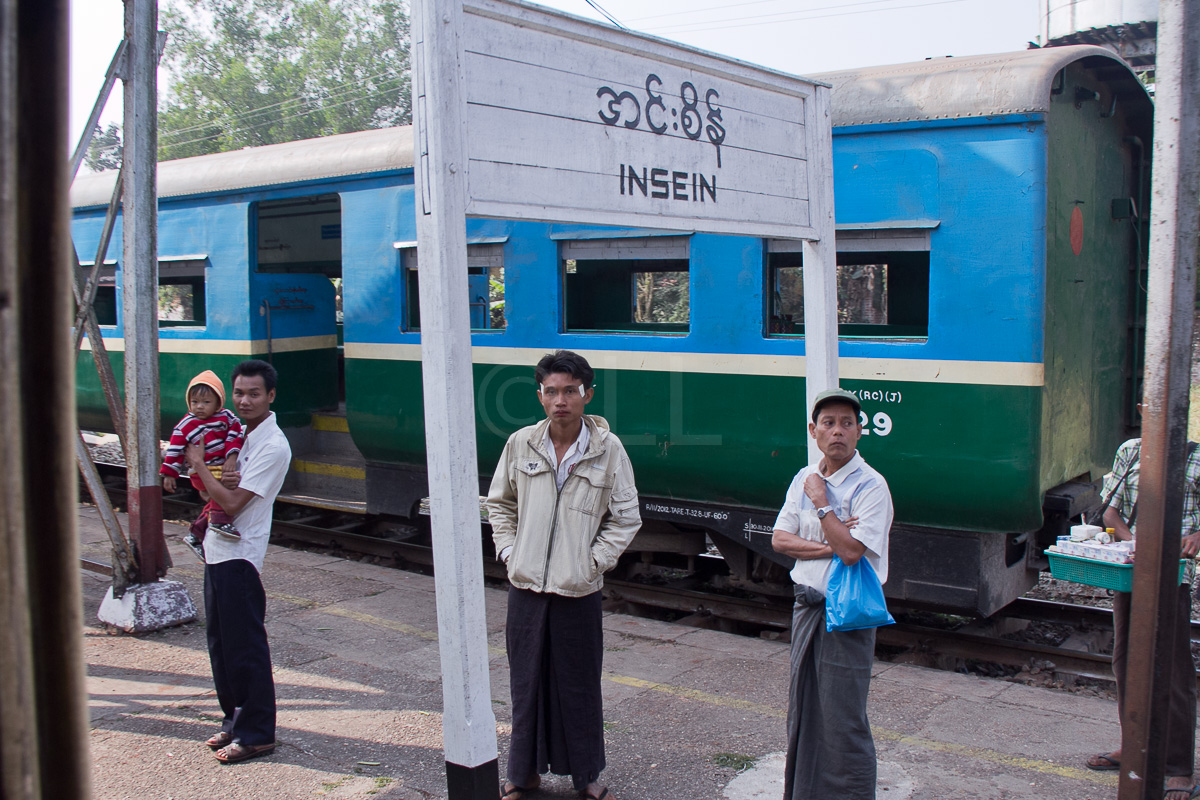To suggest that getting around anywhere in Myanmar is anything but an adventure, would be misleading at best. Almost the first thing we noticed travelling in our taxi into the city was that our taxi a right hand car, seemed to be driving on the wrong side of the road! Alarm bells! So we asked the driver about this as calmly as we could, given that he was navigating Yangon streets creatively. His explanation left us ready for the excitement to come. Apparently like many countries in the region, particularly those with a British colonial connection, people drove on the left. That is, until 1970, when the leader of the time General Ne Win, decreed that the traffic rule would change to have vehicles drive on the right hand side.
Navigating Yangon
Trouble is, the country doesn’t have a car industry of its own and the cheapest source of cars is Japan, which uses right hand cars for driving on the left. Therefore, while there are some LHD cars, there are also lots of RHD ones as well. There are also still lots of old buses built in the time when they were driven on the left side of the road, so the doors are either on the wrong side, or they’ve cut new ones to cope. Makes for interesting conversations!
Another thing you won’t see in Yangon is the ubiquitous 2 stroke motorcycles, so common in the rest of Asia. It certainly makes crossing the street easier and the roads a bit quieter! Our hotel was in Sule Road, between the Pagoda in one direction and the Railway station in the other. The Bogyoke Aung San Market is a short block away in another direction, so we walked a lot. There are lots of trees and it was January, a cooler time of year, so it was quite comfortable. You will need to watch out for the colourful splotches of betel nut spit. Although technical not allowed, the habit of chewing betel nut is widespread, so be careful where you walk.
Taxis
Ask your hotel reception for advice on the cost to get where you want to go as fares must be negotiated before you set off. This isn’t too difficult. The drivers we met seemed fairly affable and we were able to agree on the price quite quickly. Petrol is expensive as all petroleum products have to be imported.
Buses
We weren’t able to figure out any timetables and the buses were all pretty crowded, so we really just ‘bus watched’ rather than tried to use them, but if you have a local contact, they may be another adventurous way of discovering different parts of the city. One thing we noticed was how the conductors seemed to hop off at intersections to tout for passengers. A good place to watch this activity is from the overpass across Sule Road, looking towards the Sule Road Pagoda.
Trishaws
There were a few of these Myanmar versions of the popular three wheeled pedal transport, waiting outside the railway station. We didn’t actually see any with passengers, but they seem to be suitable for only one passenger at best. The riders we saw along the road were certainly adept at navigating Yangon traffic.
Ferries
There are ferries plying the Yangon River, for local traffic, between both sides of the river. You can enjoy a trip over the river on the ferry, it takes about 10 minutes to get to Dala from the Nan Thida ferry terminal opposite the Strand Hotel. The ferries leave every 20 minutes or so and you will pay ‘tourist price’, about USD4 for a return trip. You can’t reserve a seat, but you are free to wander around the ferry taking photos and talking to fellow passengers. The old ferry in the photo has since been replaced by new ferries from Japan.

Trains
If you have the time, a good way to join the local people as they go about their daily life, is to take a ride on the commuter train that runs in a large loop around the city. Apparently it goes both clockwise and counter-clockwise and with a few trips a day, with a fare of 200kyat for the loop. If you leave from the main station, it may be interesting to hop off at one of the ‘market’ stations perhaps Da Nyin Gone or Insein and have a look around. The trains are not air conditioned and you will be in with everyone else and by that time, if it’s crowded and hot, you’ll probably want a drink. Try a freshly made fruit drink – avocado makes a surprisingly delicious thirst quencher, as does a mix of papaya and lime.

If you catch the overnight train from Bagan to Yangon, you will join the loop near Da Nyin Gone station. While you can’t leave the train, you are going slowly enough to see all the station markets as you pass. You’ll also pass at least one commuter train, like the one below at Insein Station.
Trams
Since the beginning of 2016, Yangon has introduced a new way to get around the city. A new tram service was set up with assistance from the Japanese Government to run along the river front. Although the service hours and route are limited, it’s another inexpensive way to see the city from the local viewpoint.













This Post Has 0 Comments